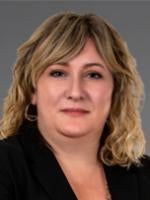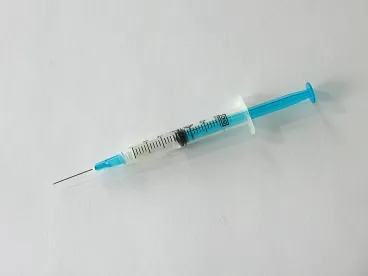For the year ending August 2020, provisional data from the Centers for Disease Control and Prevention shows that opioid overdose deaths increased 26.8 percent compared to the previous 12 months, with opioid overdoses resulting in more than 88,000 deaths. The Department of Health and Human Services (HHS) has observed that these deaths disproportionately affect working Americans with families, with the highest rates of opioid overdose deaths occurring in individuals between the ages of 25 and 54.
Buprenorphine, used in medication-assisted treatment for opioid dependence, has been the subject of significant regulatory restrictions. HHS Secretary Xavier Becerra issued new guidance that reduces certain of these legal requirements that are a reported barrier to prescribing and dispensing buprenorphine for patients receiving substance abuse maintenance treatment or detoxification treatment.
This new guidance specifically exempts certain providers from needing to certify that they meet the statutory requirements related to training, counseling, and other ancillary services (e.g., psychosocial services) under federal law to receive a Drug Enforcement Administration (DEA) registration to dispense Schedule III, IV, and V drugs or combinations of such drugs, such as buprenorphine.1
Who is Impacted?
Physicians, physician assistants, nurse practitioners, clinical nurse specialists, certified registered nurse anesthetists, and certified nurse midwives who dispense narcotic drugs to individuals for maintenance treatment or detoxification treatment are all impacted by the new guidance. Certain of these practitioners are required by state law to be supervised by, or work in collaboration with, a DEA-registered physician when prescribing medications for the treatment of opioid use disorder.
How to Claim the Exemption
To claim an exemption, a practitioner must submit a notice of intent (NOI) to the Substance Abuse and Mental Health Services Administration (SAMHSA).2 The NOI must select a patient limit of 30, in which case the practitioner would not need to certify as to the training, counseling, or other ancillary services requirements listed at 21 U.S.C. § 823(g)(2)(B)(i)–(ii). However, the waiver only applies to practitioners treating patients who are located in the same states where the practitioner is licensed to treat patients, unless the practitioner is an employee of a contractor of the United States, acting within the scope of his or her employment/contract.
SAMHSA reviews applications within 45 days of receipt. Once the application process is complete and the application is approved, SAMHSA will email an approval letter to the practitioner indicating the practitioner’s waiver level, certification date, and information regarding receipt of the practitioner’s X-designation from the DEA, which should occur within seven to 10 business days. The exemption applies only to Schedule III, IV, and V drugs or combinations of such drugs covered under 21 U.S.C. § 823(g)(2)(C), such as buprenorphine. It does not apply to the prescribing, dispensing, or use of Schedule II medications, such as methadone, for the treatment of opioid use disorders. SAMSHA’s webpage also notes that there are “federal laws and regulations [that] permit physicians and other qualifying practitioner[s] to administer medications approved by the Food and Drug Administration (FDA) for the treatment of OUD under special circumstances without a buprenorphine waiver.”3
How Long will the Exemption Tied tot he NOI Last?
If approved, the practitioner’s exemption from needing to satisfy the certification requirements related to psychosocial services at 21 U.S.C. § 823(g)(2)(B)(i)–(ii) will remain in place for one year.
Recommendations From HHS
Providers who avail themselves of this exemption are strongly encouraged by HHS to use the HHS Buprenorphine Quick Start Guide.4 They are also encouraged to provide patients with access to psychological services, such as counseling, or other ancillary services or to refer patients, as appropriate, to licensed behavioral health care practitioners. In addition, the guidance recognizes the need for core curriculum training on substance use disorders, and therefore, attention is directed to the SAMHSA Providers Clinical Support System as a suggested resource for technical assistance.5
1 See 21 U.S.C. § 823(g)(2)(B)(i)–(ii) and 21 U.S.C. § 823(g)(2)(C), the latter of which provides as follows:
(g) Practitioners dispensing narcotic drugs for narcotic treatment; annual registration; separate registration; qualifications; waiver
(1) Except as provided in paragraph (2), practitioners who dispense narcotic drugs to individuals for maintenance treatment or detoxification treatment shall obtain annually a separate registration for that purpose. The Attorney General shall register an applicant to dispense narcotic drugs to individuals for maintenance treatment or detoxification treatment (or both)
(A) if the applicant is a practitioner who is determined by the Secretary to be qualified (under standards established by the Secretary) to engage in the treatment with respect to which registration is sought;
(B) if the Attorney General determines that the applicant will comply with standards established by the Attorney General respecting (i) security of stocks of narcotic drugs for such treatment, and (ii) the maintenance of records (in accordance with section 827 of this title) on such drugs; and
(C) if the Secretary determines that the applicant will comply with standards established by the Secretary (after consultation with the Attorney General) respecting the quantities of narcotic drugs which may be provided for unsupervised use by individuals in such treatment.
(2)(A) Subject to subparagraphs (D) and (J), the requirements of paragraph (1) are waived in the case of the dispensing (including the prescribing), by a practitioner, of narcotic drugs in schedule III, IV, or V or combinations of such drugs if the practitioner meets the conditions specified in subparagraph (B) and the narcotic drugs or combinations of such drugs meet the conditions specified in subparagraph (C).
(B) For purposes of subparagraph (A), the conditions specified in this subparagraph with respect to a practitioner are that, before the initial dispensing of narcotic drugs in schedule III, IV, or V or combinations of such drugs to patients for maintenance or detoxification treatment, the practitioner submit to the Secretary a notification of the intent of the practitioner to begin dispensing the drugs or combinations for such purpose, and that the notification contain the following certifications by the practitioner
(i) The practitioner is a qualifying practitioner (as defined in subparagraph (G)).
(ii) With respect to patients to whom the practitioner will provide such drugs or combinations of drugs, the practitioner has the capacity to provide directly, by referral, or in such other manner as determined by the Secretary—
(I) all drugs approved by the Food and Drug Administration for the treatment of opioid use disorder, including for maintenance, detoxification, overdose reversal, and relapse prevention; and
(II) appropriate counseling and other appropriate ancillary services.
(iii)(I) The total number of such patients of the practitioner at any one time will not exceed the applicable number. Except as provided in subclause (II), the applicable number is 30.
(II) The applicable number is 100 if, not sooner than 1 year after the date on which the practitioner submitted the initial notification, the practitioner submits a second notification to the Secretary of the need and intent of the practitioner to treat up to 100 patients.
(III) The Secretary may by regulation change such applicable number.
(IV) The Secretary may exclude from the applicable number patients to whom such drugs or combinations of drugs are directly administered by the qualifying practitioner in the office setting.
2 See BECOME A BUPRENORPHINE WAIVERED PRACTITIONER, https://www.samhsa.gov/medication-assisted-treatment/become-buprenorphine-waivered-practitioner, (last visited May 5, 2021).
3 See id.
4 See BUPRENORPHINE QUICK START GUIDE, https://www.samhsa.gov/sites/default/files/quick-start-guide.pdf
(last visited May 5, 2021) and BUPRENORPHINE QUICK START POCKET GUIDE, https://www.samhsa.gov/sites/default/files/quick-start-pocket.pdf , (last visited May 5, 2021).
5 See PROVIDERS CLINICAL SUPPORT SYSTEM, https://pcssnow.org, (last visited May 5, 2021).





 />i
/>i
